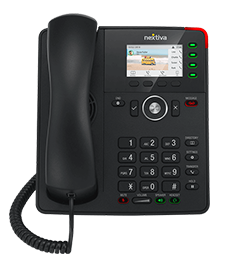How We Rate
Our goal is to help you choose the best tools for your specific situation. To do that, we review and rate a wide range of business software.
Up front, we invest a lot of time developing a methodology for each type of product we review, paying close attention to the factors you should consider when making a final decision.
Each type of software has a unique methodology, as you’ll see outlined below.
Aside from the methodologies above, we also consider other factors, including reputation, advertising fees from our partners, and our own in-house conversion rates. Our proprietary formulas paired with these secondary criteria considerations impact ratings and the order in which we display brands on our website.
With that said, our goal always remains the same—provide honest, accurate, and helpful reviews so you can make the best decisions for your business.
How We Rate Phone Systems
Before anything else, we carefully evaluate each provider’s pricing structure, including their monthly fees, hardware costs, add-ons, per-minute rates, and setup fees.
Price
Ease of Use
Call Management Features
Communication tools
Integrations
Customer support
Price
Before anything else, we carefully evaluate each provider’s pricing structure, including their monthly fees, hardware costs, add-ons, per-minute rates, and setup fees.
Higher prices don’t always mean you get more features and lower costs don’t mean you sacrifice functionality. Rather than looking at dollar values alone, we recommend considering the overall value each provider delivers for your specific business.
Ease of Use
An intuitive, user-friendly phone system makes life easier for everyone, while a clunky, unnecessarily complex solution leads to headaches all around.
When evaluating providers, we look closely at factors that impact initial implementation, employee productivity, and the customer experience. We consider everything from provisioning new users and streamlined setup processes to ease of transferring calls, configuring auto attendants, and setting auto distribution rules.
Call Management Features
There are dozens of call management features that come standard with most business phone systems, like transfers, flipping, auto attendants, and call parking. First and foremost, we verify that all the essentials are there and call them out when they aren’t.
Aside from those, there are numerous other features you may need, too, including call recording, configurable call flows, after-hours routing, real-time queue management, and more.
However, we don’t just stop at making sure those features exist. We also do our best to understand how well they work and what it’s like to use them for employees, admins, receptionists, and your customers.
Communication Tools
Modern phone systems do a whole lot more than just calling. Most also include video, texting, real-time chat, faxing, and file sharing. But providers don’t offer these additional communication channels equally. Some place strict limits while others give you free reign to use them as much as you need to.
We look closely at participant limits, monthly texting caps, file storage limitations, and how much you have to pay to get the tools you need.
Intergrations
Connecting your new phone system to the tools you already use is crucial to seamless implementation and streamlined everyday use.
While the number of integrations really isn’t that important, larger lists are more likely to include the tools you use. In particular, we pay close attention to CRMs, collaboration tools, calendars, sales software, customer support solutions, and automation software.
On top of that, many providers limit integrations on the cheaper plans, so we pay close attention to how much you have to pay to use them.
Customer Support
We prioritize providers that offer anytime 24/7 customer support via phone and live chat. However, as you probably know, availability isn’t the only thing that matters. As such, we also dive deep into past and current customer experiences plus reach out on our own when we can to evaluate quality and timeliness.
Aside from that, we look closely at additional support options, like developer support, priority options, dedicated account managers, on-site training, documentation, community forums, and more.
Secondary Considerations
As mentioned earlier, we also may look at several secondary considerations when deciding how to rate and order brands on our website. These additional factors can apply to any type of software we review.
Brand Reputation
As with any business, each company’s reputation and experience in the industry tell a story about its customer satisfaction and retention. As such, we carefully consider what current and previous customers say about their experiences over the last few years.
In-House Conversion Data
We leverage our own click tracking and conversation data to understand which providers are the most interesting to our readers.
Since our goal is to help you make the best choice, we may move providers around depending on which offers, services, and products our audience tends to prefer.
Advertising Fees
We have paid partnerships with many of the brands and products we review. While we always aim to deliver honest reviews, advertising fees along with our own rating formula can play a role in our ratings, top picks, and the order in which we present providers.
